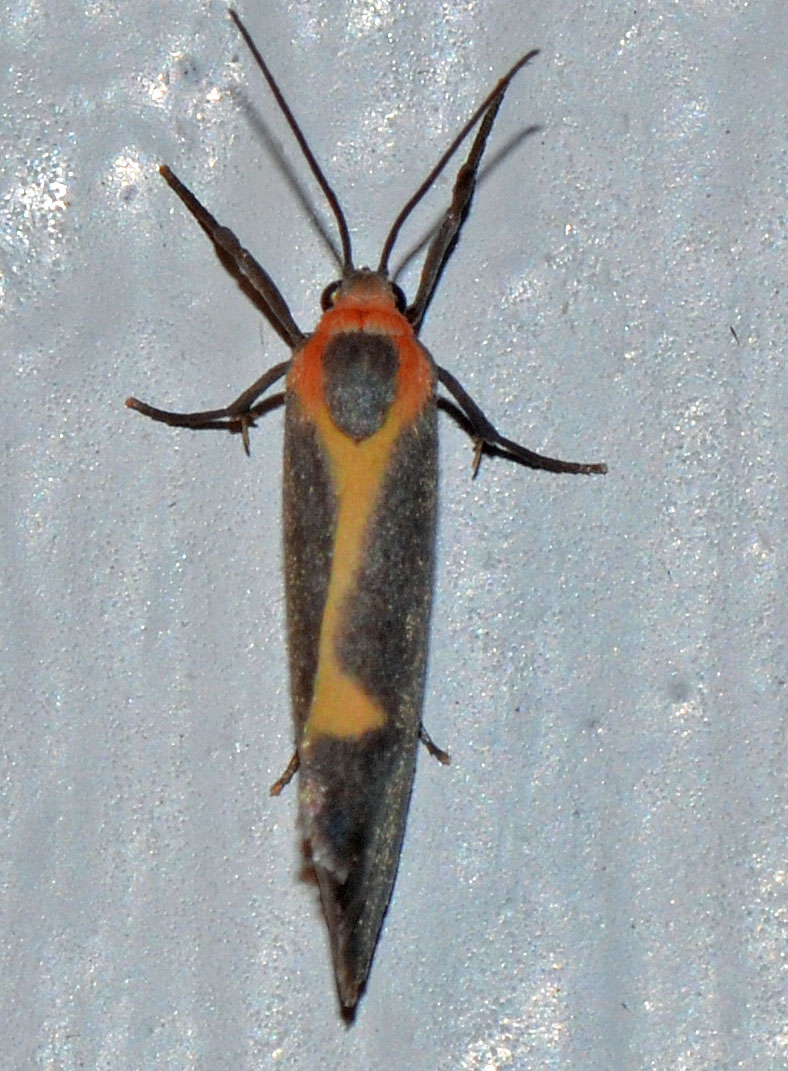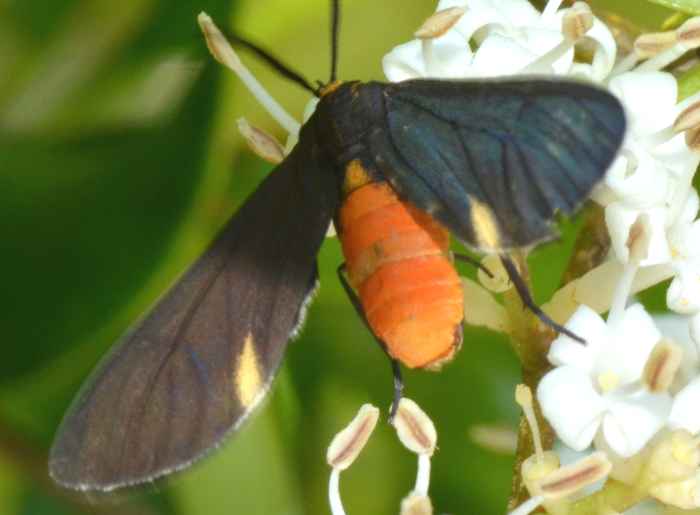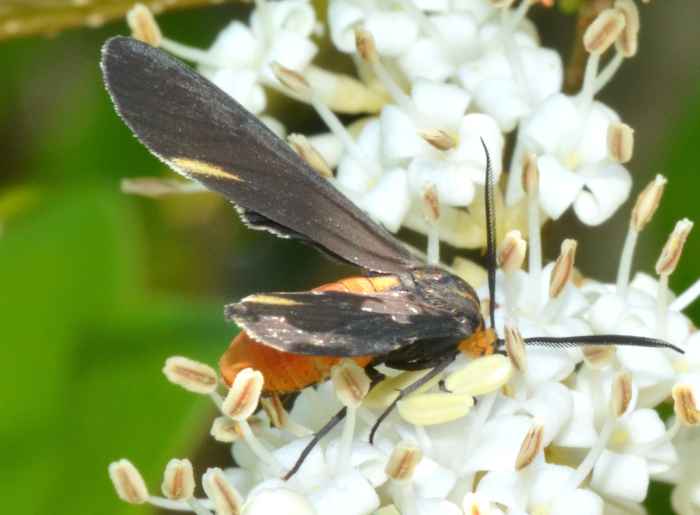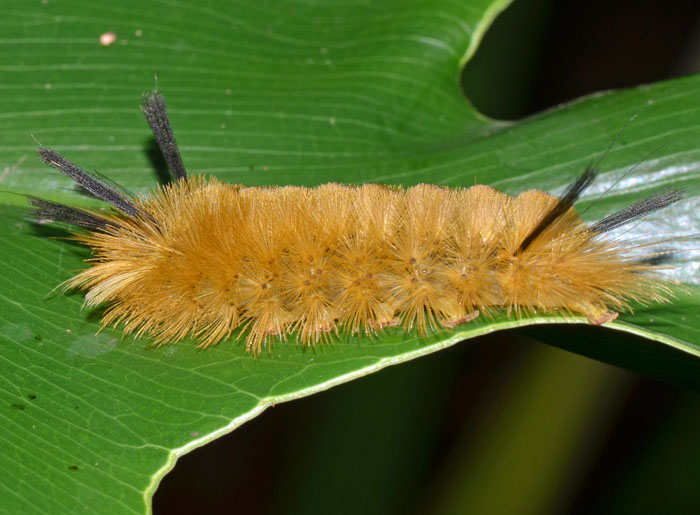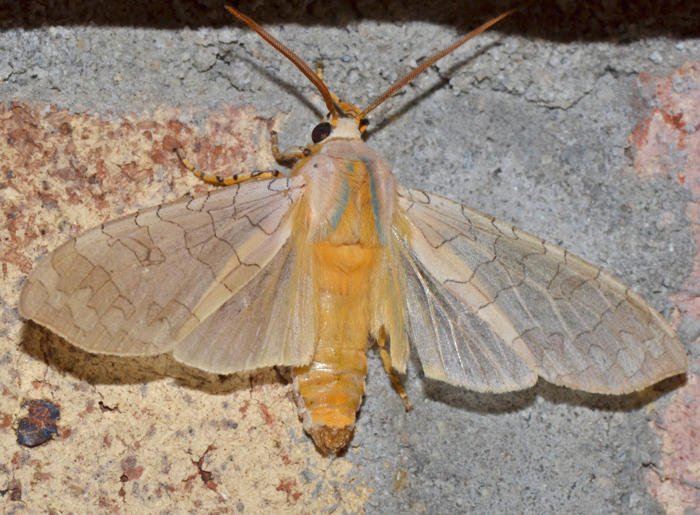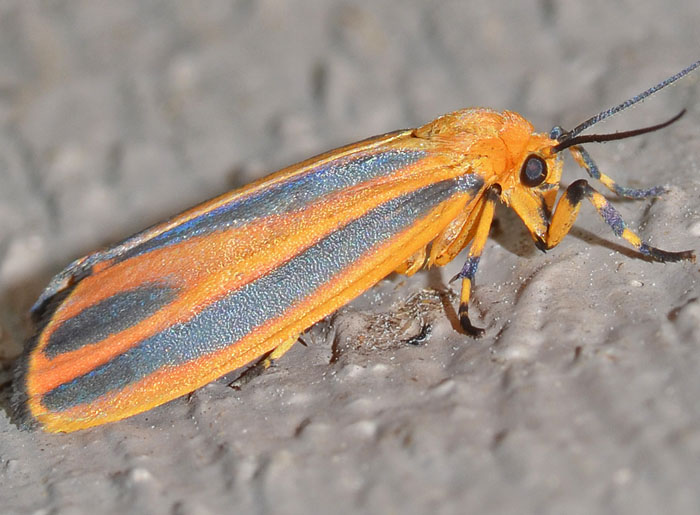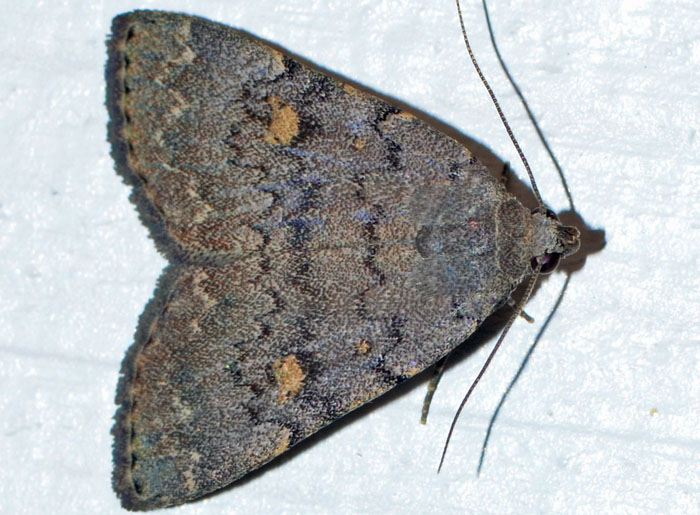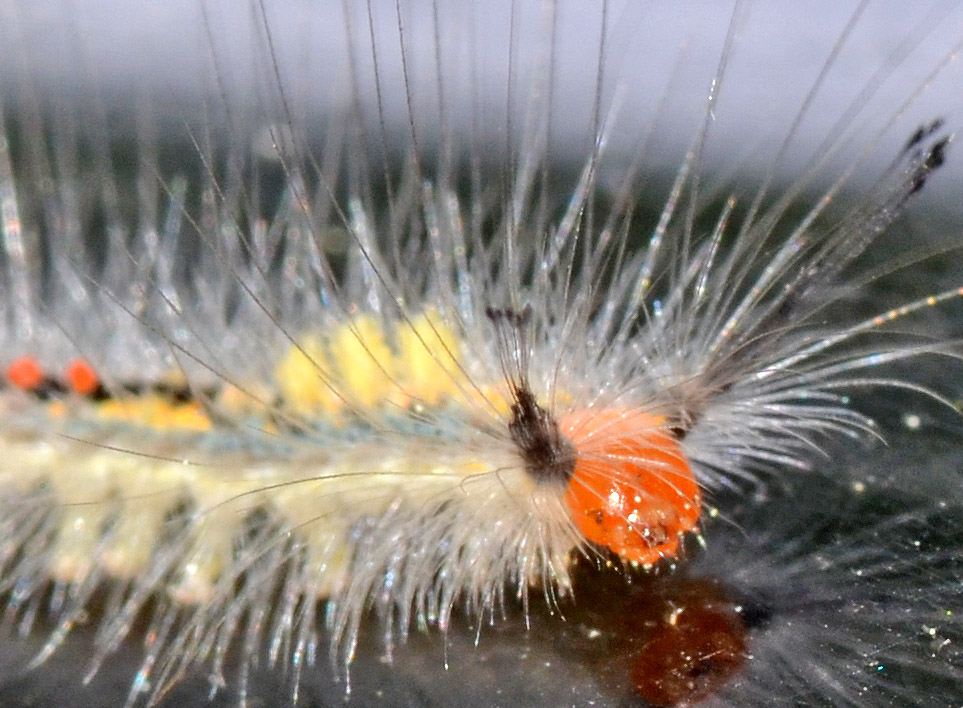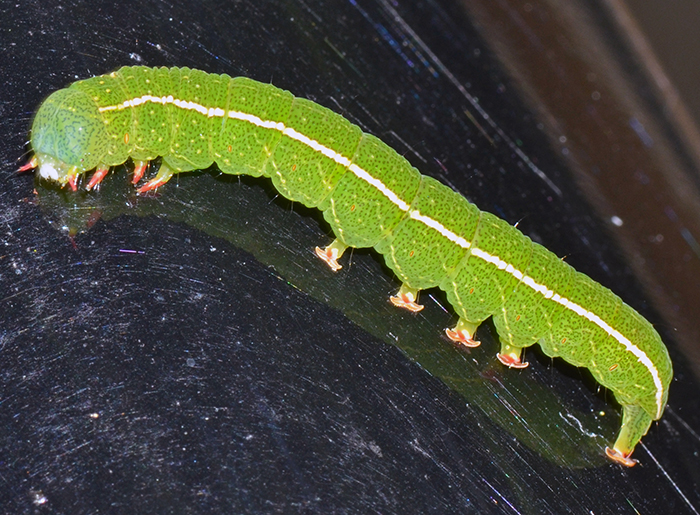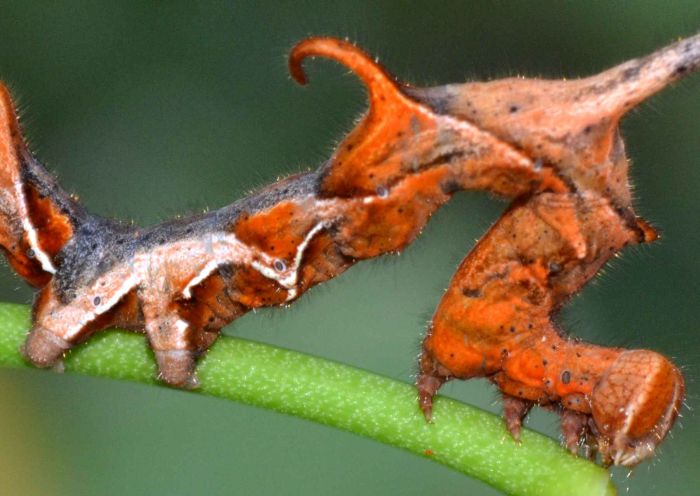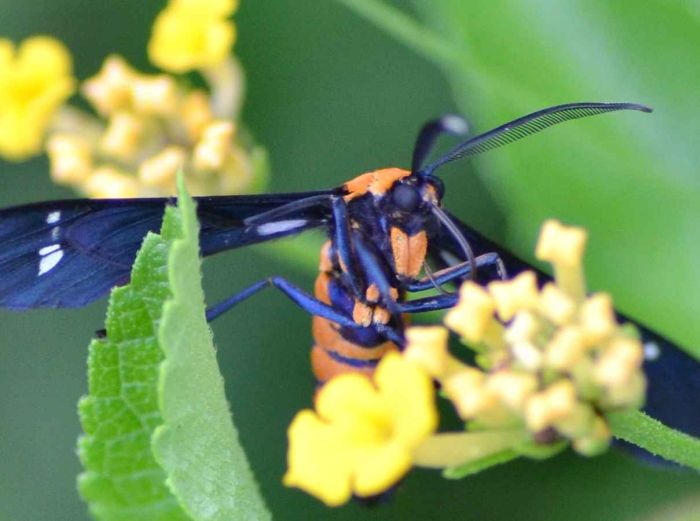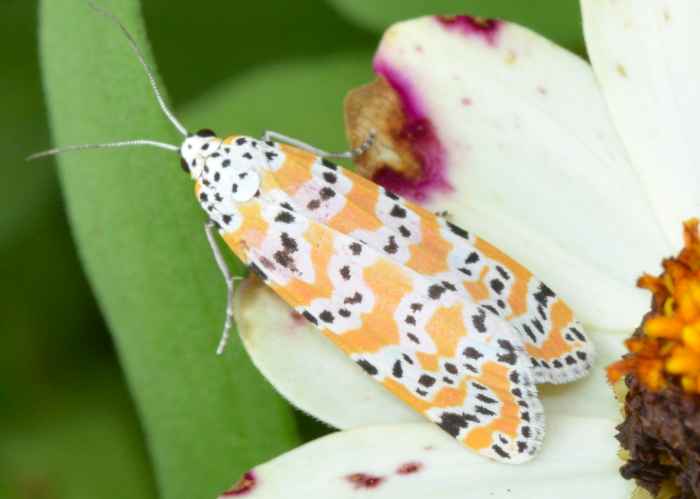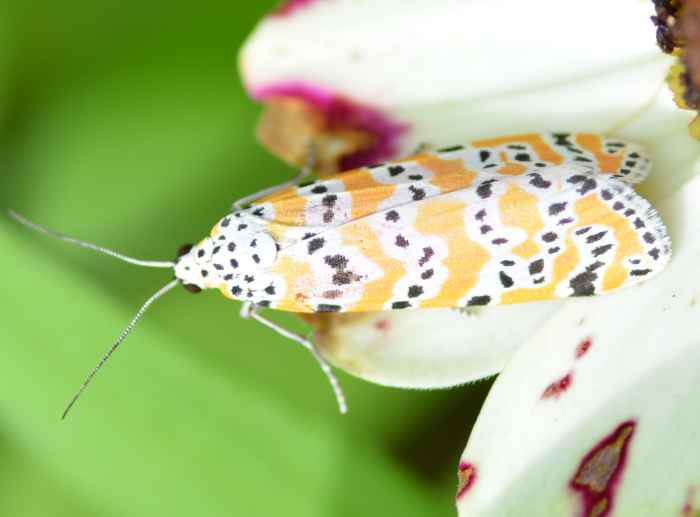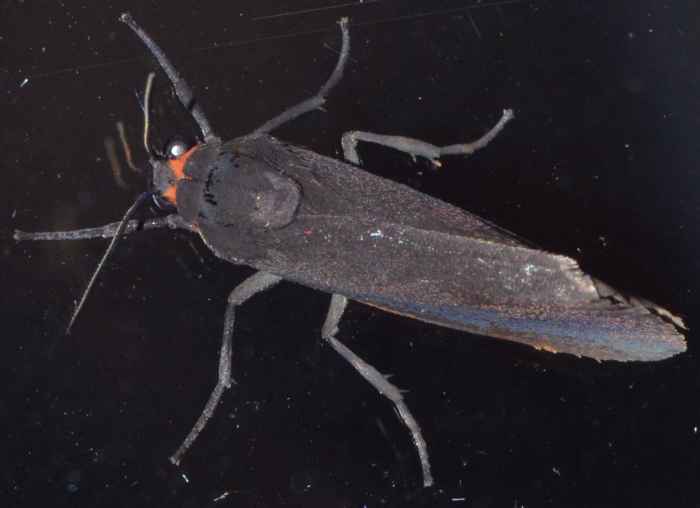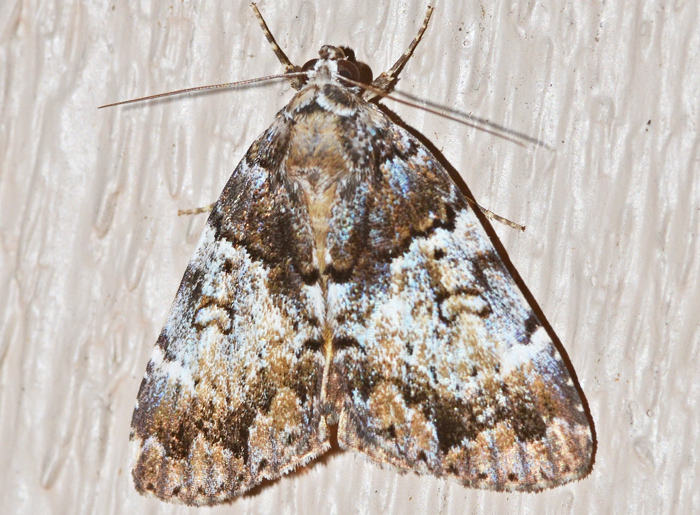 Allotria elonympha - Hodges#8721 (False Underwing). | The False Underwing can be found around deciduous trees, such as black gum, walnuts, and hickories. Allotria elonympha is a medium-sized moth, with dark gray forewings and a deep yellow hind-wing (hidden here) with an
even black border. It resembles a small true underwing moth (Catocala) but can be distinguished by the presence of the black orbicular dot on the forewing and by the lack of a dark inner band on the hindwing, which is usually present in the true underwings. bug guide (this photo): http://bugguide.net/node/view/1245240 K.A. Neil, J. Acad. Entomol. Soc. 6, 22, 2010: http://acadianes.org/journal/papers/neil_1004.pdf | ||
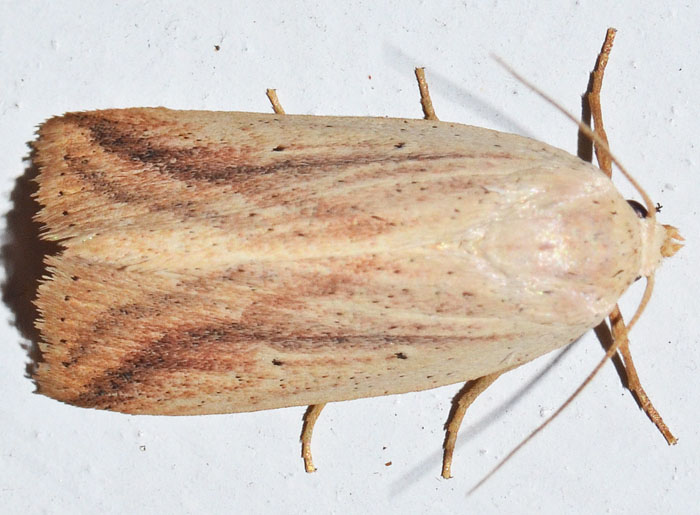 Amolita obliqua - Hodges#9819 (Oblique Grass Moth). | Pale moth with a length of about half an inch. The genus has at least five species in North America. bug guide (this photo): http://bugguide.net/node/view/1104668 | ||
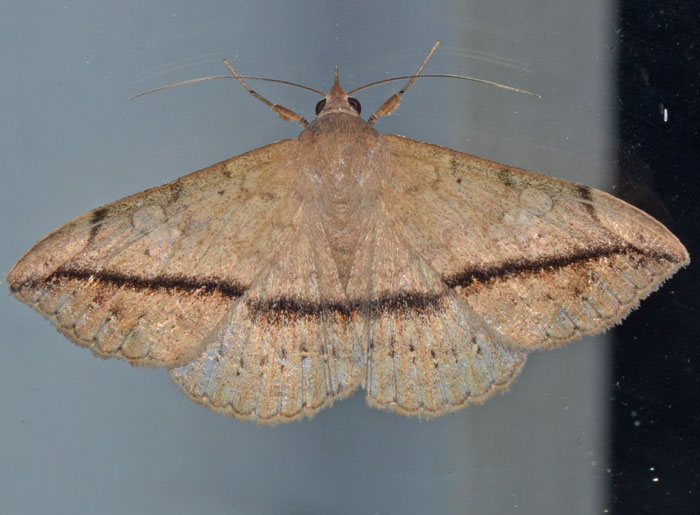 Anticarsia gemmatalis - Hodges#8574 | The color of this species is highly variable. The wings heavily mottled or mostly unmarked with a stripe and/or prominent spots. The velvetbean caterpillar is the most serious foliage-feeding pest of soybean in the Southeast. bug guide (this photo): http://bugguide.net/node/view/708795 | ||
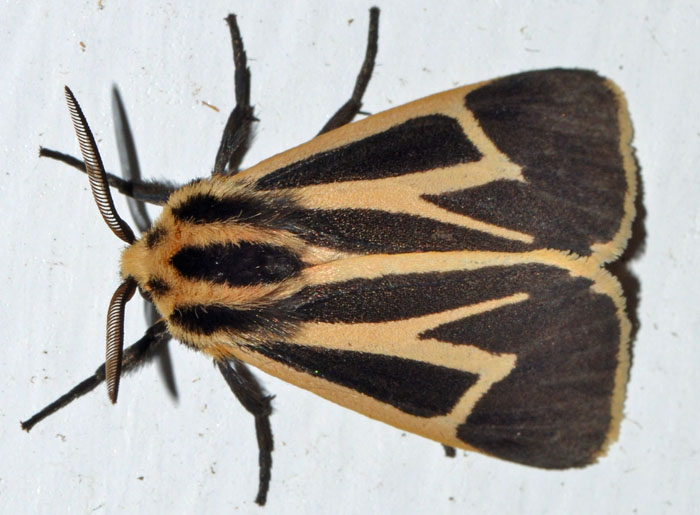 Apantesis sp.. | A tiger moth in the genus Apantesis. The identification to the species level is difficult and seems to require dissection. It surprised me to read that it is not known whether adults feed. bug guide (this photo): http://bugguide.net/node/view/1066550 | ||
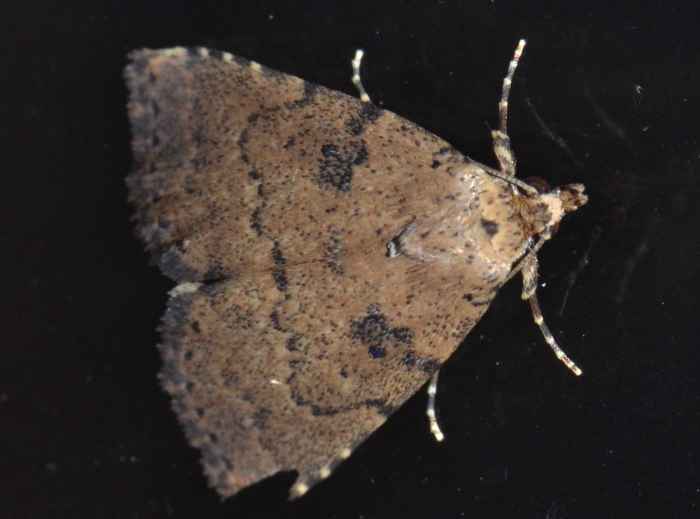 Arugisa latiorella - Hodges# 8510 (Watson's Arugisa). | I am not so sure about this ID but trust the experts. bug guide (this photo): http://bugguide.net/node/view/570605 | ||
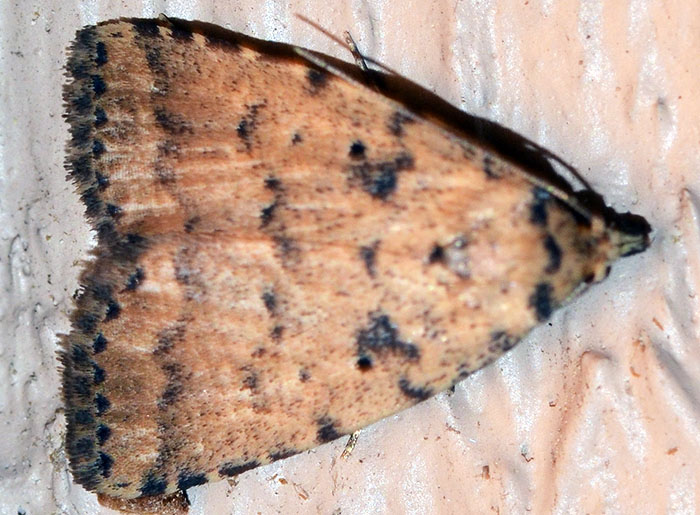 Arugisa lutea - Hodges#8509 (Common Arugisa). | My second of the three Arugisa species in the US. The wingspan is about 17 mm and its larvae feed on living and dead grasses. The sister species A. latiorella is similar but its AM and PM lines are usually more complete.
bug guide (this photo): https://bugguide.net/node/view/1512926 | ||
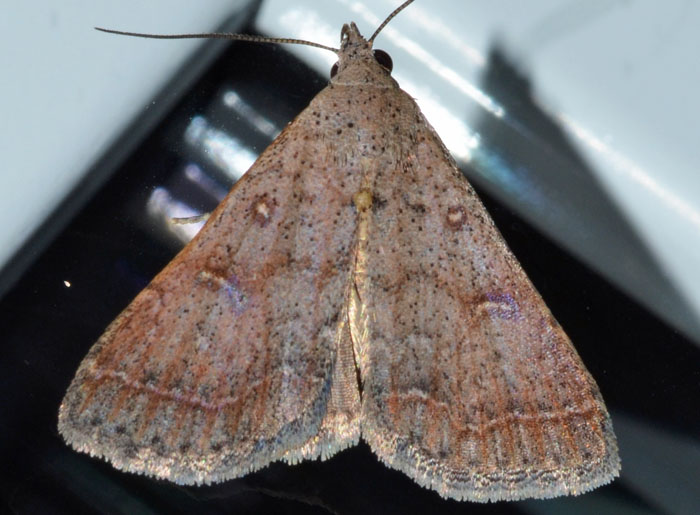 Bleptina caradrinalis - Hodges#8370 | This litter moth is Bleptina caradrinalis. This species can be found throughout the US. Adults fly from June to August.
bug guide (this photo): http://bugguide.net/node/view/690186 | ||
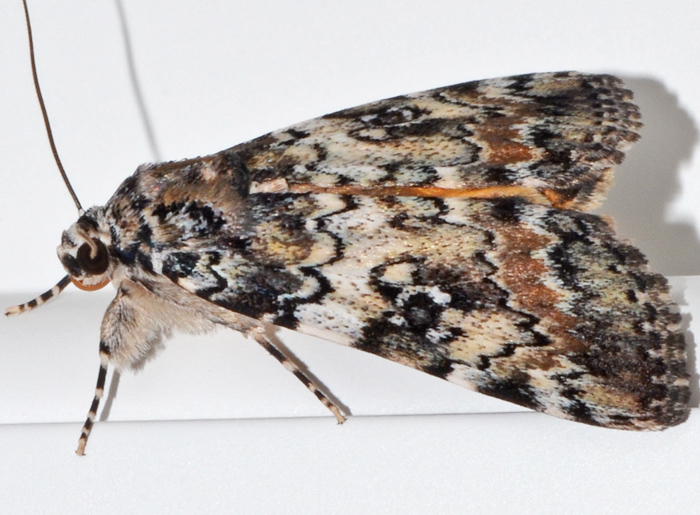 Catocala connubialis - Hodges#8877 | My wife found this beautiful moth in our laundry room where it was hiding unsuccessfully on a white cabinet. Its larvae feed on leaves of oak and the species can be found throughout the Eastern half of the US. Its colors vary strongly and names for different "forms" have been suggested. bug guide (this photo): http://bugguide.net/node/view/1220416 | ||
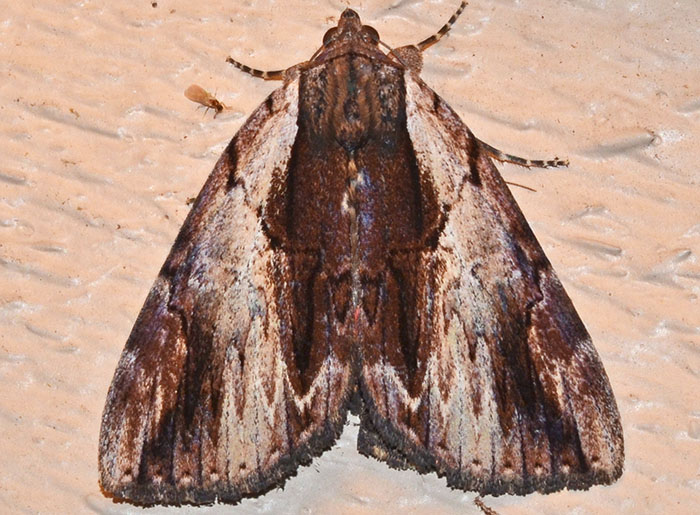 Catocala ultronia - Hodges#8857 (Ultronia Underwing). | Unfortunately, I didn't see the rather beautiful red and black band pattern on the hindwings of this moth. The appearance of the forewings is quite variable and involves brown, gray, and black colors. The wing span is about two inch. Ultronia Underwing feeds on Rosaceae including cherries and hawthorns.
bug guide (this photo): http://bugguide.net/node/view/1368380 | ||
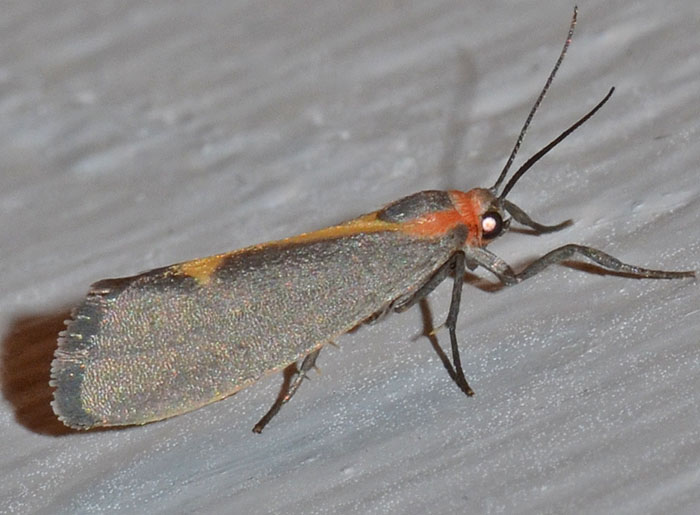 Cisthene plumbea - Hodges#8067 | As the name suggests, the larvae of Cisthene plumbea feed on lichen (algae or cyanobacteria living symbiotically among the filaments of a fungus). The larvae in this genus "are frass shooters that fire their fecal pellets up to 20 times the length of their bodies."
bug guide (these photos): http://bugguide.net/node/view/1101396 | ||
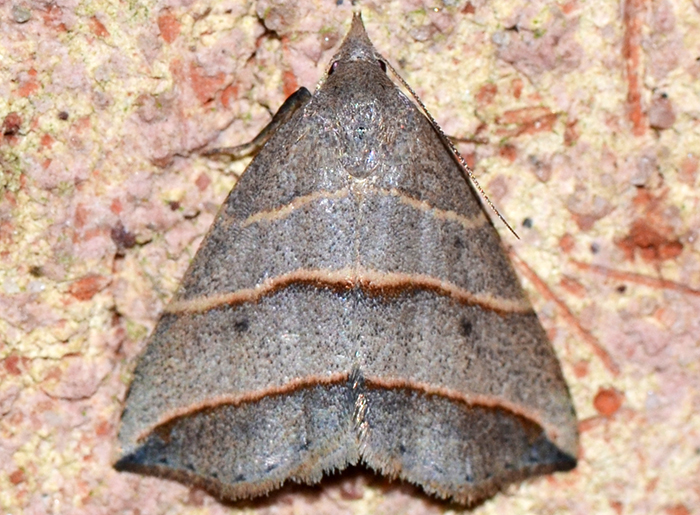 Colobochyla interpuncta - Hodges#8411 | Quite striking for a little, brown moth due to its three yellow lines crossing the forewings. The yellow-lined owlet is found in wetlands from Wisconsin to Nova Scotia south to Florida and Texas. Its larvae feed on willows and persimmon trees. bug guide (this photo): https://bugguide.net/node/view/1567735 | ||
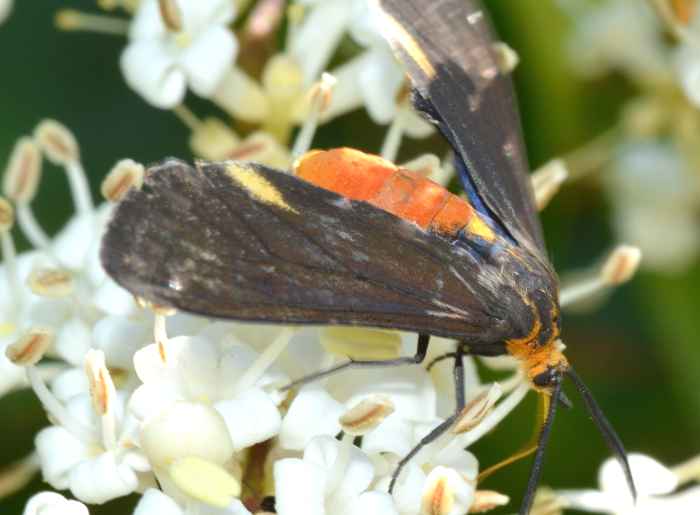 Dahana atripennis (Black-Winged Dahana - Hodges#8266). | The Black-Winged Dahana (Dahana atripennis) can be found only in the deep South (FL, GA, and SC). Most of its abdomen has a striking orange color and the forewings are dark brown with a small, yellow dash. It belongs to the Tiger Moths. The larvae feed on Spanish moss.
bug guide (these photos): http://bugguide.net/node/view/634602 Dalton State: http://www.daltonstate.edu/galeps/webpages/arctiidae/Datripennis.htm | ||
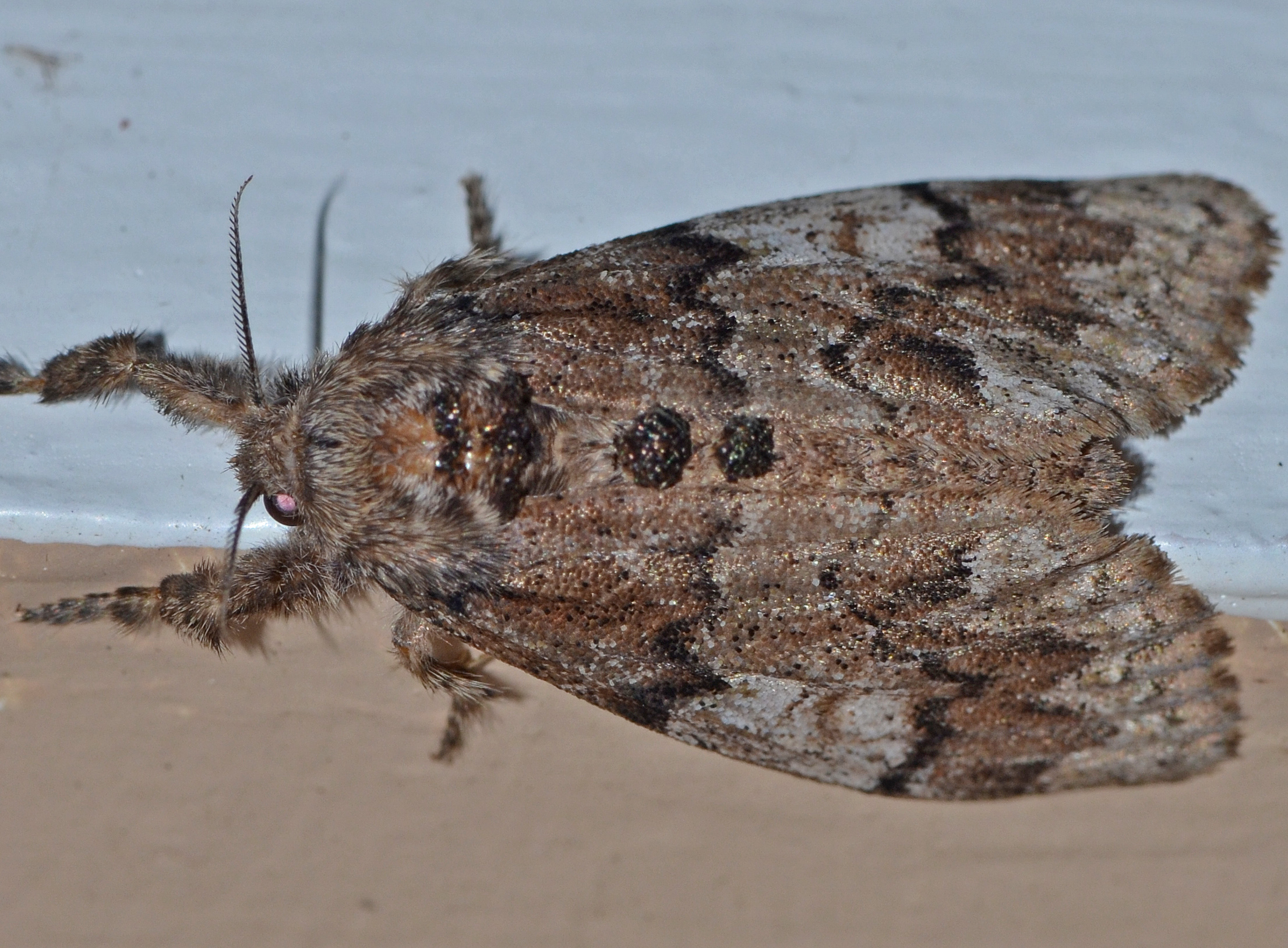 Dasychira sp.. | A Tussock Moth in the genus Dasychira which has 16 species in
America north of Mexico. The antennae have long branches in males and are short in females. Their legs are hairy. bug guide (this photo): http://bugguide.net/node/view/1239198 wikipedia: https://en.wikipedia.org/wiki/Dasychira | ||
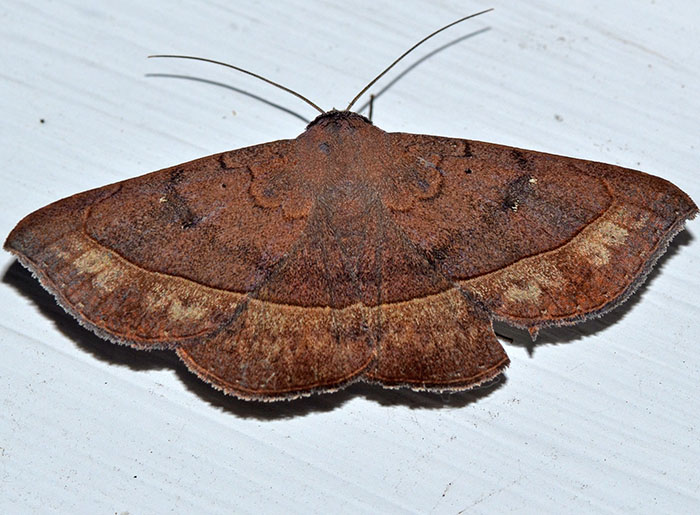 Epidromia rotundata - Hodges#8585.3 | In the US, Epidromia rotundata is mainly found in the Deep South (FL, AL, GA) and Texas. This fairly large (wingspan 40-45 mm), brown moth can have a purplish tint and is one of only three Epidromia species north of Mexico. bug guide (this photo): https://bugguide.net/node/view/1592333 | ||
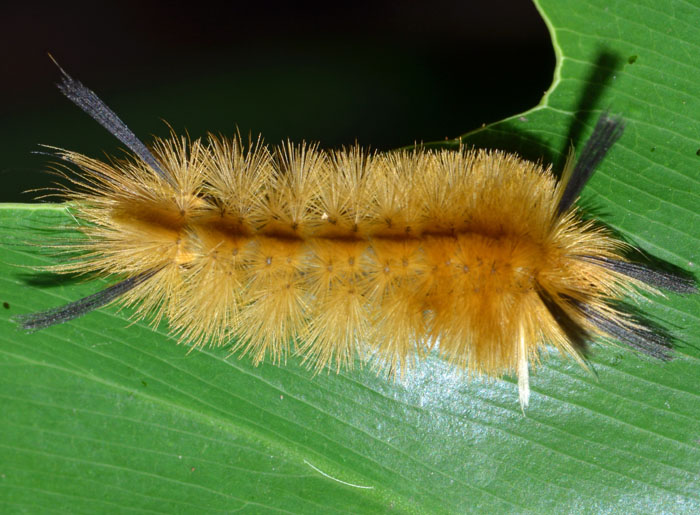 Halysidota tessellaris - Hodges#8203 | The Banded Tussock Moth Caterpillar comes in a wide range of colors with long, paired, white and black lashes on the second and third thoracic segments. The "hairs" are called setae. The adult moth is pale brown and features an interesting pattern of block-like bands on its wings.
bug guide: http://bugguide.net/node/view/541 wikipedia: http://en.wikipedia.org/wiki/Halysidota_tessellaris | ||
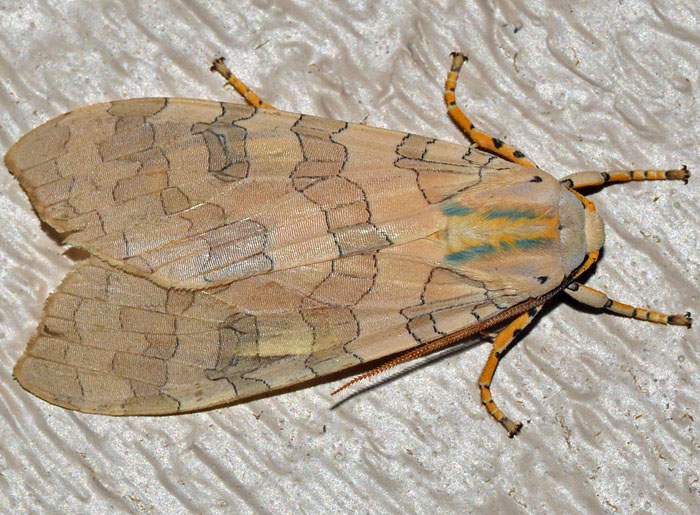 Halysidota sp.. | After seeing caterpillars of this moth for weeks, I finally came across an adult. This tiger moth belongs to the genus Halysidota but unfortunately the species can be determined only by dissection of the genitalia. For Florida, the possible candidates are H. tessellaris, H. harrisii, and H. cinctipes. The small photo (4/8/16) shows a different specimen.
bug guide (this photo): http://bugguide.net/node/view/980085 | ||
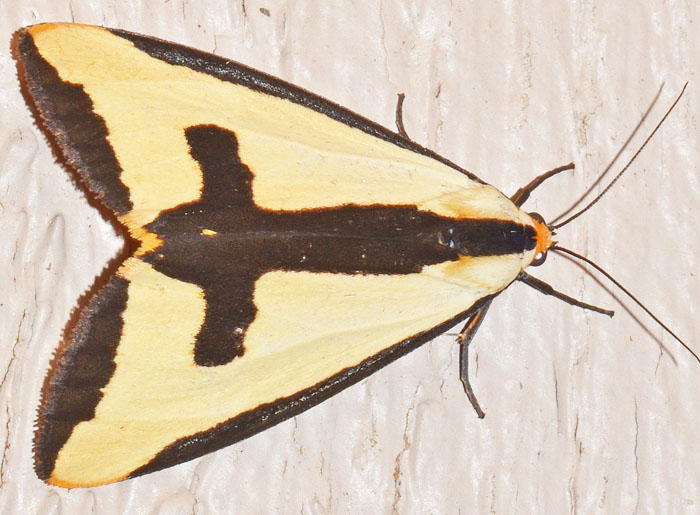 Haploa clymene - Hodges#8107 (Clymene Moth). | Another cool tiger moth with a bold pattern that makes it easy to identify. This photo was difficult to take, not because of the moth that cooperated nicely, but the very high humidity. My camera immediately fogs up affecting the lens filter, the view finder, and even the flash. Welcome to August in Florida! bug guide (this photo): http://bugguide.net/node/view/1124934 | ||
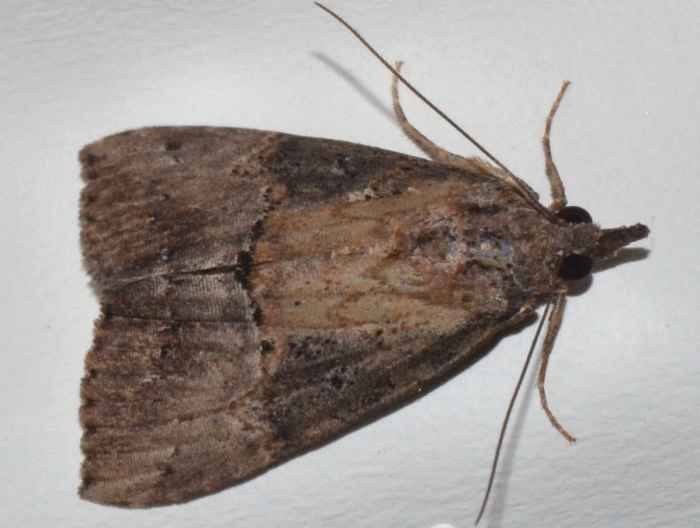 Hypena scabra - Hodges#8465 (Green Cloverworm Moth). | This moth is widespread in the Eastern half of the country. It is a Green Cloverworm Moth (Hypena scabra). Larvae are foilage feeder; 25 to 30 mm long and pale green with two white stripes on each side. Four or more generations per year. bug guide (this photo): http://bugguide.net/node/view/572306 BugwoodWiki: http://wiki.bugwood.org/Archive:GATop50/Green_Cloverworm | ||
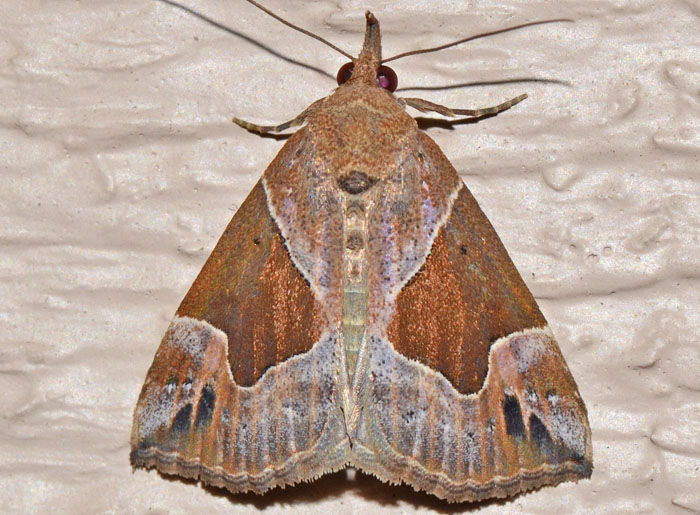 Hypena manalis - Hodges#8441 (Flowing-line Bomolocha). | The hindwing of the Flowing-line Bomolocha are uniformly brown whereas the midwing area is whitish and again different from the basal and distal, brown areas of forewing medium. The wing span is about one inch. Its larvae feed on False Nettle (Boehmeria cylindrica).
bug guide (this photo): http://bugguide.net/node/view/1066964 | ||
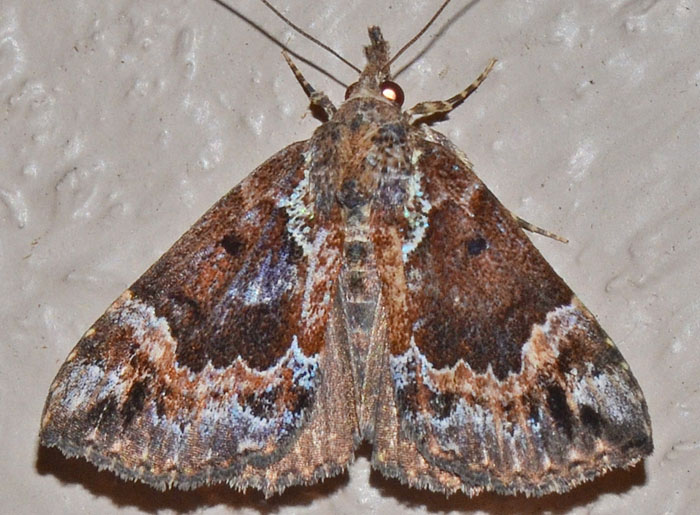 Hypena palparia - Hodges#8444 (Mottled Bomolocha). | These moths are found in mature mixed and deciduous woods. The hindwing patterns are highly variable. Another common name is "Variegated Snout-moth".
bug guide (this photo): http://bugguide.net/node/view/1067244 | ||
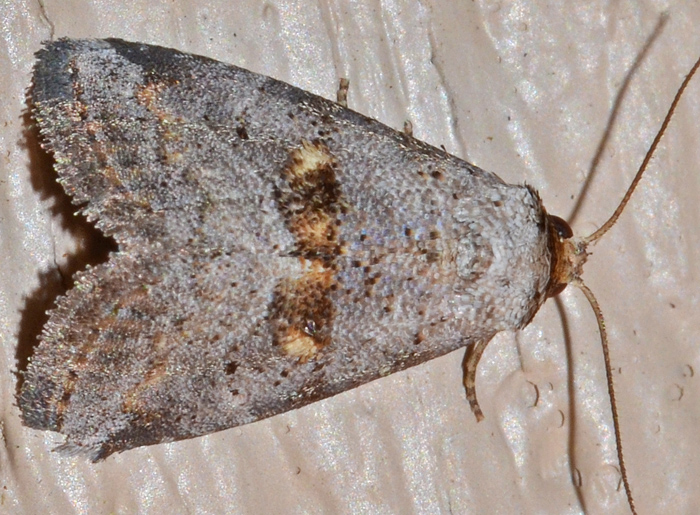 Hyperstrotia flaviguttata - Hodges#9039 | The Yellow-spotted Graylet. A study on the feeding habits of adult moths states that this genus visited soil and puddles (most likely to obtain amino acids and sodium). Such mud-puddling behavior is well-known from butterflies. Pretty much all the information I could find on this moth. bug guide (this photo): http://bugguide.net/node/view/1209165 | ||
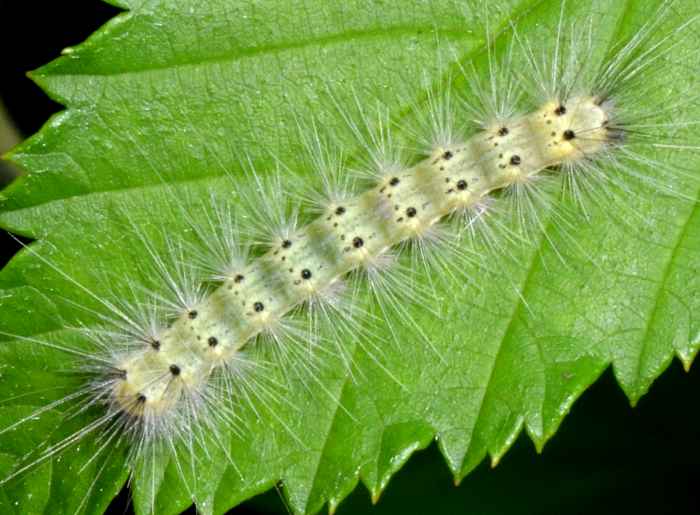 Hyphantria cunea - Hodges#8140 | This common and widespread caterpillar can be found from May to October in the Southern US. They feed on foliage and can enclose the entire tree with their web-like tents but typically cause no or little damage. The adults of Hyphantria cunea (Fall Webworm Moth) are white with no or some grayish-brown to black spots. bug guide (this photo): http://bugguide.net/node/view/658178 | ||
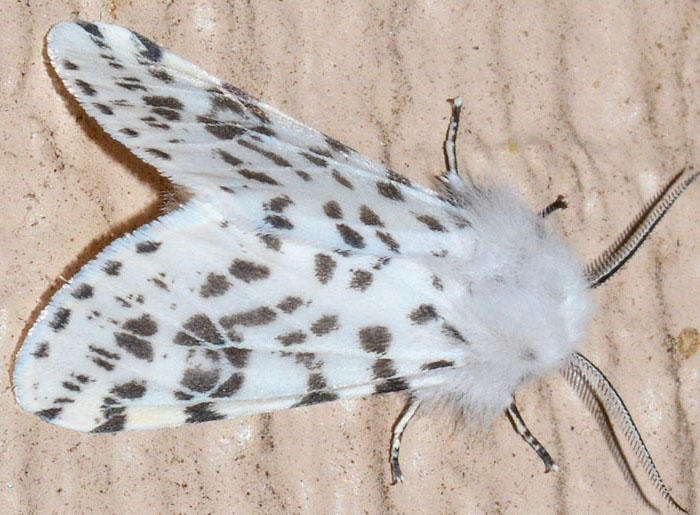 Hyphantria cunea - Hodges#8140 (Fall Webworm Moth). | A beautiful tiger moth which was great to see because I had often encountered its striking caterpillars (see above). The wings of this species are either all white (in northern and some southern individuals) or sparsely to heavily marked with dark grayish-brown to black spots (in many southern individuals). The spots are rectangular or wedge-shaped, arranged loosely in rows in basal half of wing, and in either a V-shape or more-or-less random arrangement in the distal half. bug guide (this photo): http://bugguide.net/node/view/1198481 | ||
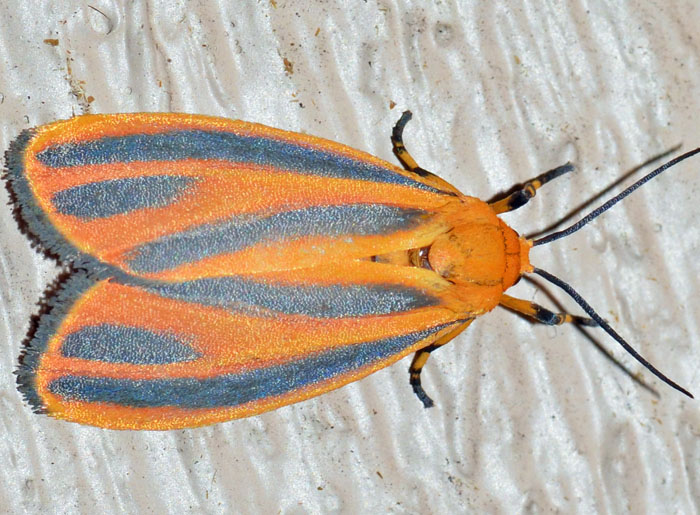 Hypoprepia fucosa - Hodges#8090 (Painted Lichen Moth). | This beautiful, reddish-orange moth is the Painted Lichen Moth. The dark stripes are a characteristic pattern for this species. It lives in wooded areas and the nocturnal adults come to light. The spiky, black and yellow caterpillars feed on moss and lichen on trees.
bug guide (these photos): http://bugguide.net/node/view/980618 | ||
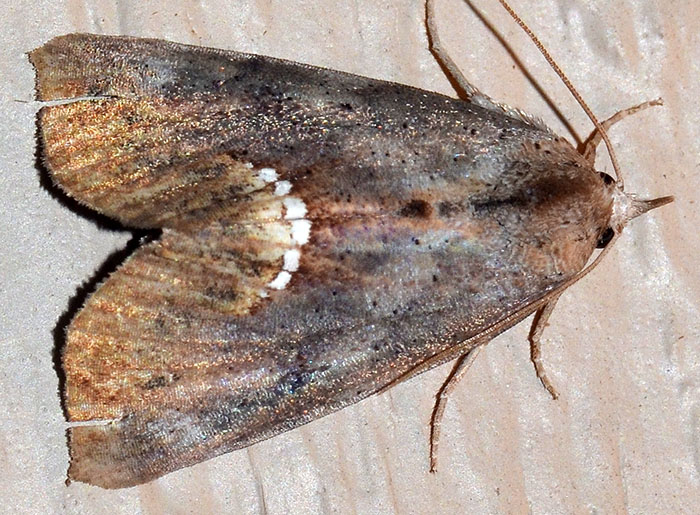 Hypsoropha hormos - Hodges#8528 (Small Necklace Moth). | Another brownish moth but this one has, what looks like, a row of white teeth on its back. These characteristic feature is probably the necklace that its common name refers to. It is also present in the sister species H. monilis which is overall larger. The larvae prefer persimmon trees. bug guide (this photo): https://bugguide.net/node/view/1581485 | ||
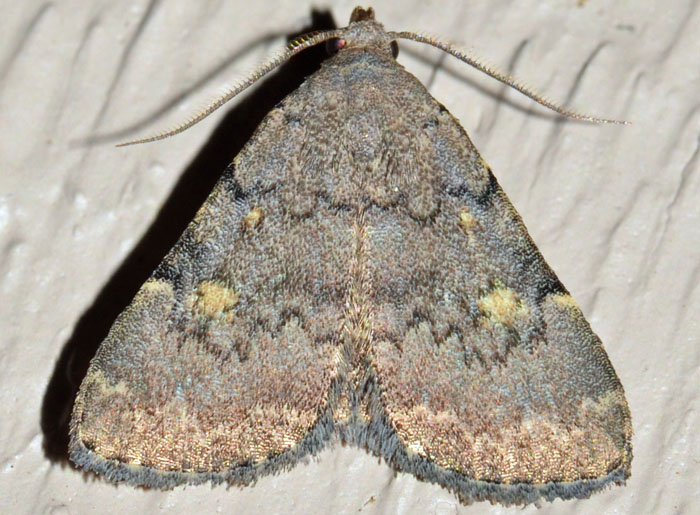 Idia aemula (Common Idia). | Another Idia species. In Europe, this one is apparently called "Waved Tabby". The small photo shows (what I believe to be) a different specimen.
bug guide (this photo): http://bugguide.net/node/view/975664 | ||
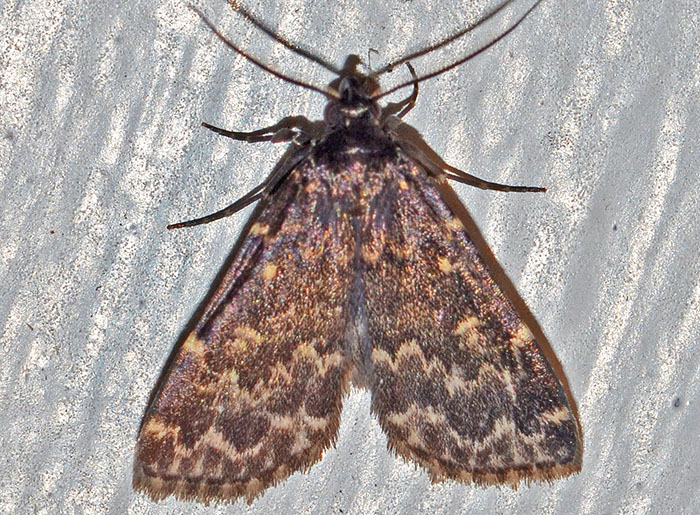 Idia lubricalis - Hodges#8334 (Glossy Black Idia). | ... and another Idia moth: I. lubricalis. And yes, it did look rather glossy. The wingspan is 24-36 mm. Its larvae feed on dead leaves and fungi associated with dead wood.
bug guide (this photo): http://bugguide.net/node/view/1446028 | ||
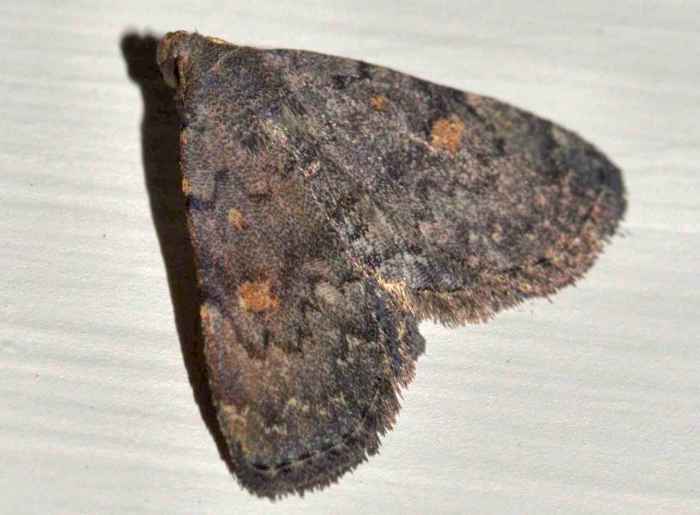 Idia americalis - Hodges#8322 (American Idia). | A widespread moth in North America: American Idia (Idia americalis). The forewings are light gray and brown, marked with fine black jagged lines. The reniform spot is usually filled with orange scales. Multiple generations per year. Larvae feed on lichen and dead leaves. bug guide (this photo): http://bugguide.net/node/view/572870 U Alberta: http://www.entomology.ualberta.ca/searching_species_details.php?s=601 wikipedia: http://en.wikipedia.org/wiki/Idia_americalis | ||
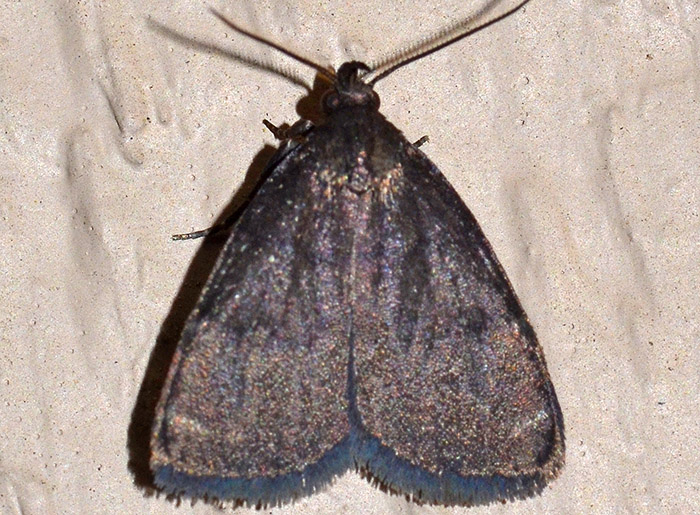 Idia rotundalis - Hodges#8326 (Rotund Idia Moth). | Idia rotundalis, also known as Chocolate Idia, has shiny, sooty black forewings with obscure dusky lines. It feeds on coral fungi and dead leaves.
bug guide (this photo): https://bugguide.net/node/view/1505916 | ||
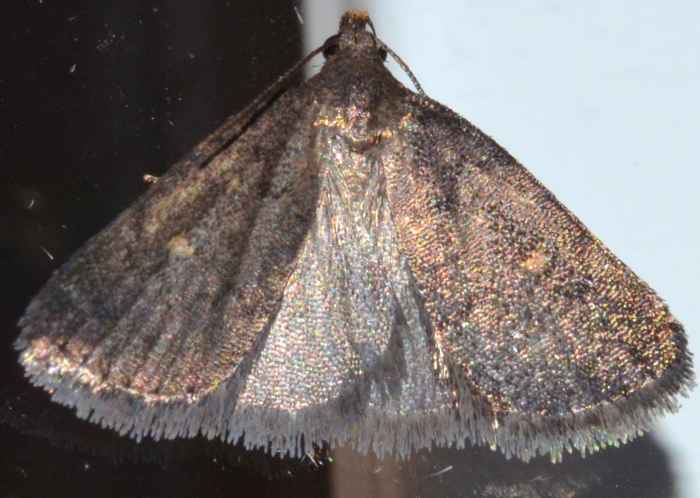 Idia diminuendis - Hodges#8329 (Orange-spotted Idia). | There are simply too many brownish Idia species in Tallahassee. For the US, the count stands at 18. They are impossible for me to distinguish, so thanks to the bugguide experts! bug guide (this photo): http://bugguide.net/node/view/588206 | ||
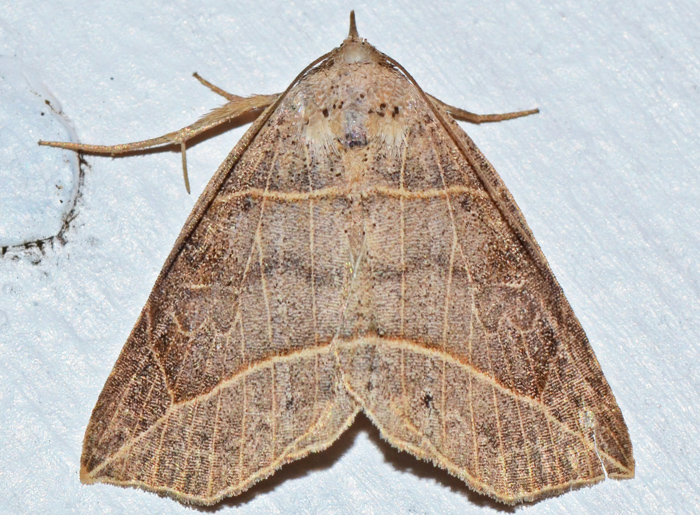 Isogona tenuis - Hodges#8493 (Thin-lined Owlet). | Found in deciduous woods across the eastern half of the country, this moth has thin lines along the veins of its forewing. There are seven Isogona species in North America. The larvae feed on Celtis (hackberries) species. The late instar caterpillars rest during the day under bark or in grass shelters at the base of the food plant and resume feeding on foliage at dusk.
bug guide (this photo): http://bugguide.net/node/view/1229693 Nature Search: http://www.fnanaturesearch.org/index.php?option=com_naturesearch&task=view&id=1655 | ||
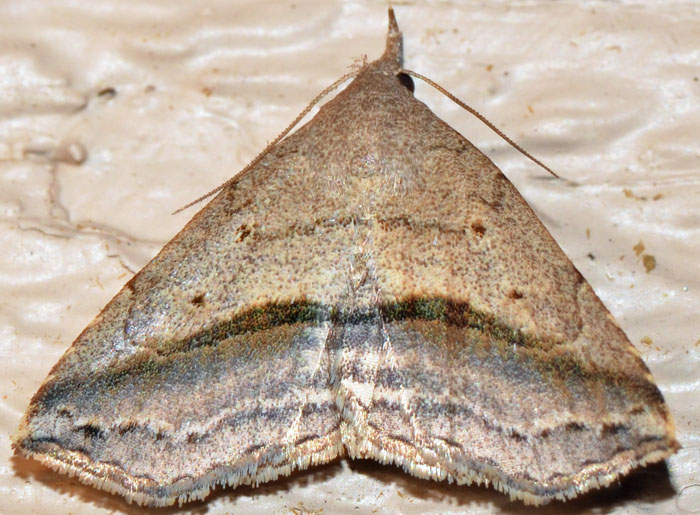 Ledaea perditalis - Hodges#8491 (Lost Owlet). | The Lost Owlet is common in the South. It lives near the edges of wet woods and marshes. Its larvae feed on woolgrass and buttonbush. The grayish forewing has a curved, double line forming a solid black bar the inner margin. This moth was attracted to our outdoor lights.
bug guide (this photo): http://bugguide.net/node/view/975675 | ||
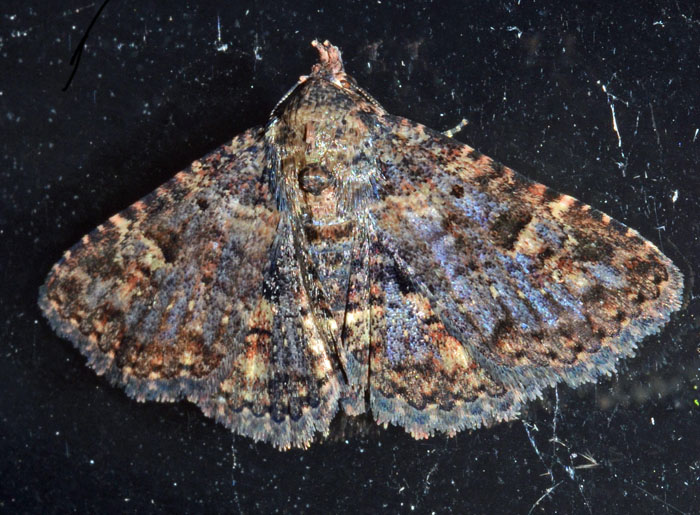 Metalectra discalis - Hodges#8499 (Common Fungus Moth). | The Common Fungus Moth (Metalectra discalis) prefers deciduous and mixed forests and can be found in most parts of the eastern half of the US. Its larvae feed on dry fungi and give this species its name.
bug guide (this photo): http://bugguide.net/node/view/688055 | ||
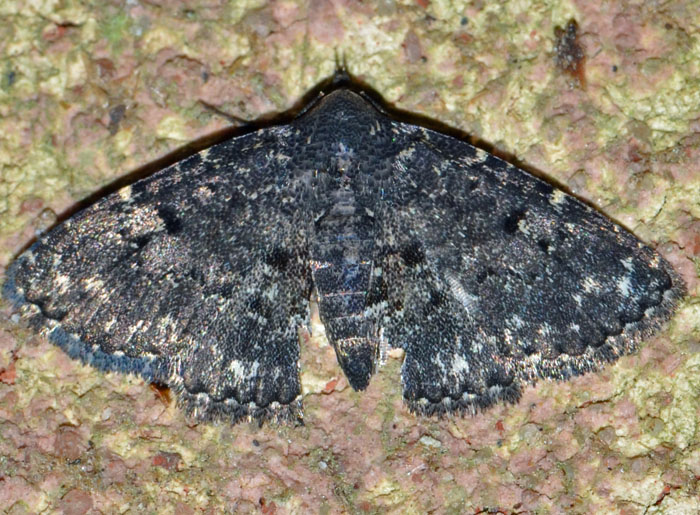 Metalectra tantillus - Hodges#8502 (Black Fungus Moth). | I could have never identified this moth without the help of the experts on bugguide.net. So a random thanks to y'all. This black fungus moth was waiting for the night underneath my deck. The genus Metalectra has eleven species in the US and Canada. bug guide (this photo): http://bugguide.net/node/view/972761 | ||
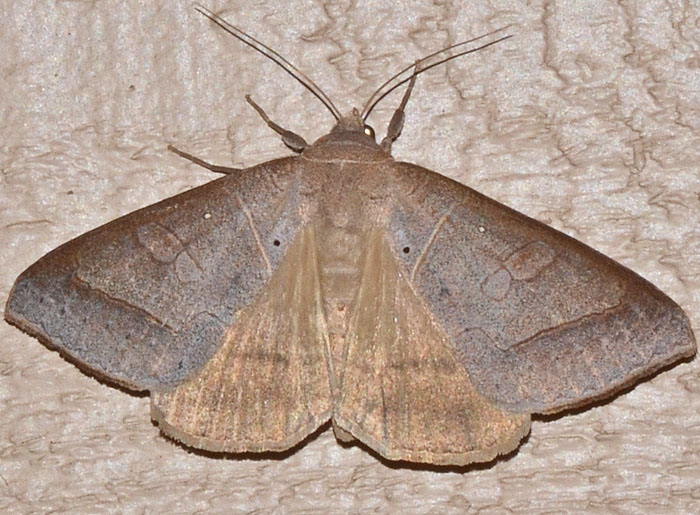 Mocis marcida - Hodges#8744 (Withered Mocis). | The wingspan of this moth was about 4.5 cm and it sounded rather heavy while bouncing off my porch light. There are five Mocis species in North America. bug guide (this photo): http://bugguide.net/node/view/1199939 moth photographers group: http://mothphotographersgroup.msstate.edu/species.php?hodges=8744 | ||
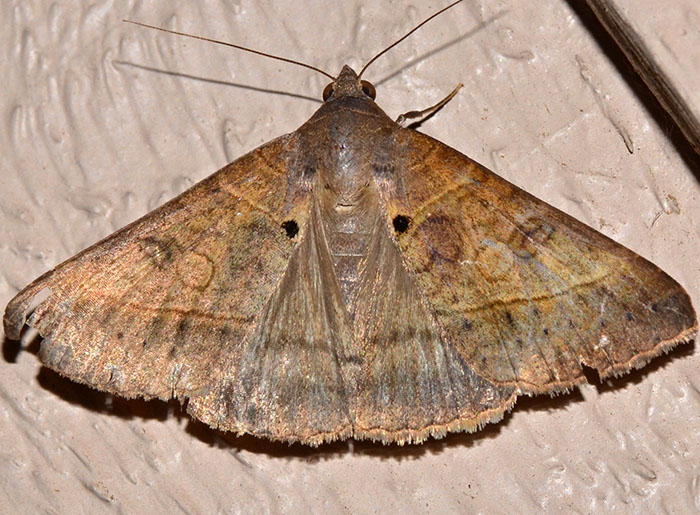 Mocis latipes - Hodges#8743 (Small Mocis). | The second Mocis species that I found in our yard. The wingspan is about 1.5". The larvae are called "Striped Grass Looper" and feed on grasses, corn, beans and turnip. The second link is for a dissertation titled "Behavioral biology of the striped grass looper, Mocis latipes (Guenée), in north-central Florida".
bug guide: http://bugguide.net/node/view/47568 UF dissertation by T. W. Dean (1985): http://ufdc.ufl.edu/AA00003399/ | ||
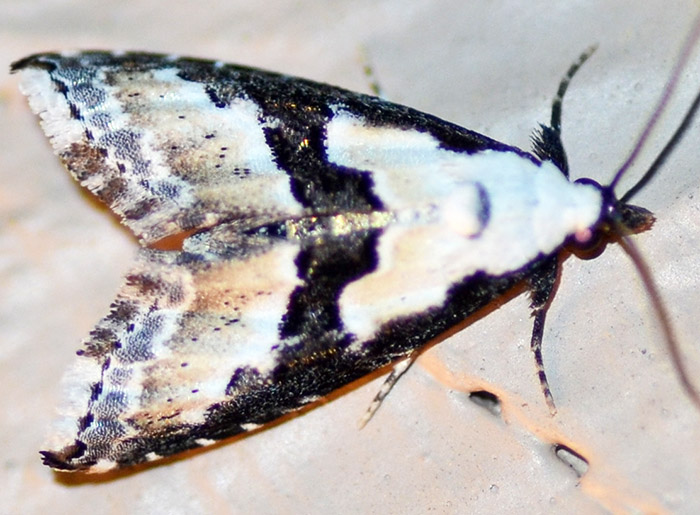 Nigetia formosalis - Hodges#8440 | Pretty, medium-sized moth with a prominent, slightly slanted, black bar across its wings. Larvae of this species have been reared on freshwater green algae, but probably also feed on lichens. Wikipedia list the moth's common name as "Thin-Winged Algibelle".
bug guide (this photo): https://bugguide.net/node/view/1507067 wikipedia: https://en.wikipedia.org/wiki/Nigetia_formosalis | ||
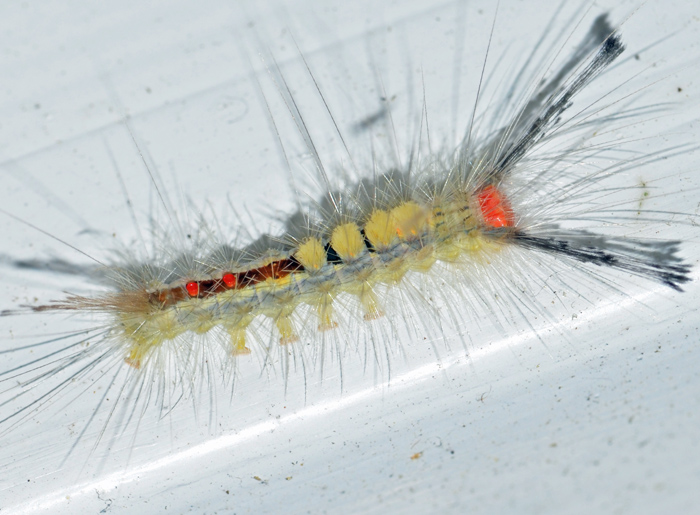 Orgyia leucostigma - Hodges#8316 | A caterpillar of the White-marked Tussock Moth. The bug guide warns that the hairs of this caterpillar are "known to cause allergic reactions". It feeds on an extremely wide variety of trees.
The fungus Entomophaga maimaiga, which was introduced to control the gypsy moth Lymantria dispar, is known to infect O. leucostigma. The small photo shows a different specimen (04/14/18).
bug guide (this photo): http://bugguide.net/node/view/941279 wikipedia: http://en.wikipedia.org/wiki/Orgyia_leucostigma | ||
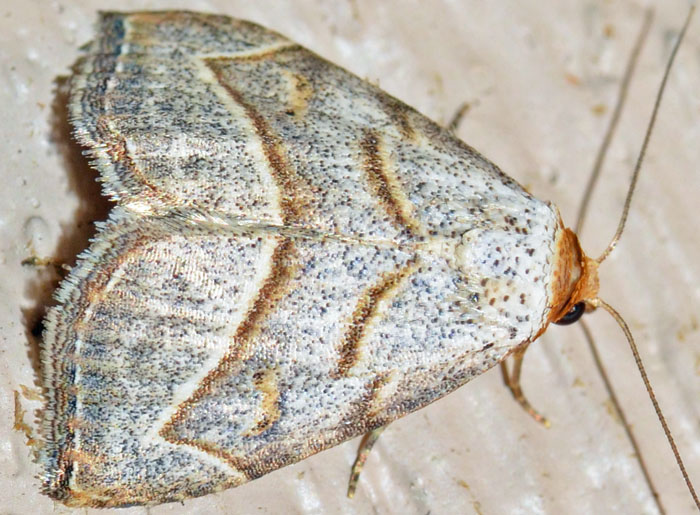 Oxycilla mitographa - Hodges#8408. | Couldn't find much about this pretty, little moth. The genus has five species in North America and this is seemingly a late sighting (even for Florida). bug guide (this photo): http://bugguide.net/node/view/981338 | ||
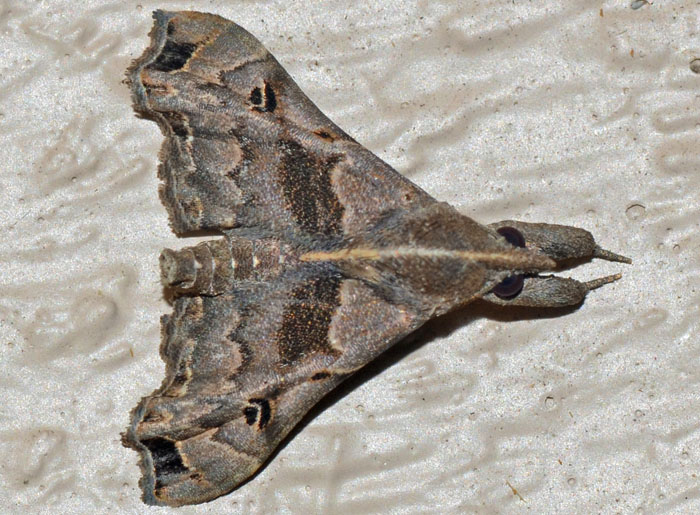 Palthis asopialis - Hodges#8398 | Looks like a jet fighter and I am just amazed by the pose. The two species of Palthis in North America can be distinguished based on the information provided here. The moth was attracted to my deck light and "sat" calmly underneath the lamp in a sea of frantic insect activity. bug guide (this photo): http://bugguide.net/node/view/974471 | ||
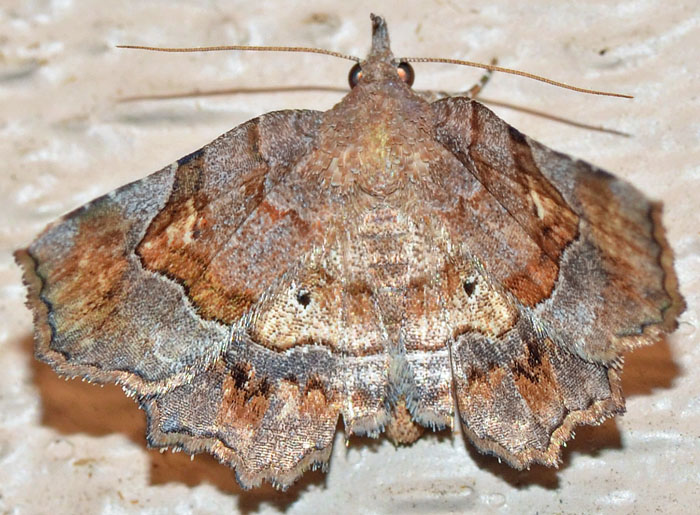 Pangrapta decoralis - Hodges#8490 (Decorated Owlet ). | This moth has its wings not spread out but rather in a semi-vertical position. The current species Pangrapta decoralis appears to include at least three varieties. bug guide (this photo): http://bugguide.net/node/view/981334 | ||
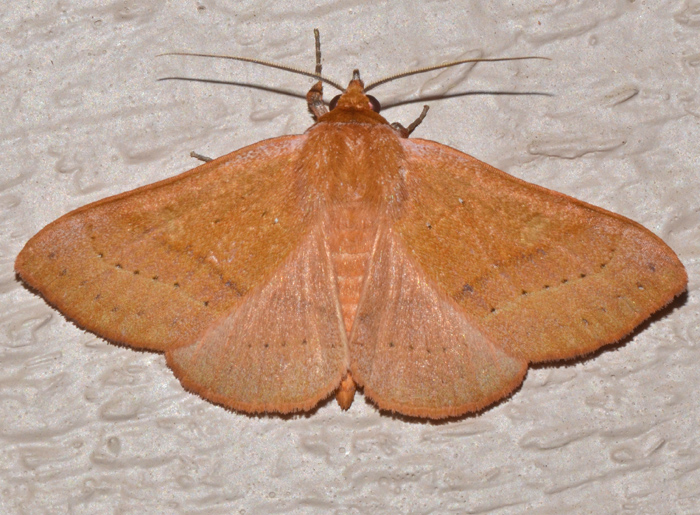 Panopoda repanda - Hodges#8589 (Orange Panopoda). | The wingspan of this brownish, orange moth is close to 4 cm. The common host plant for its larvae are live oaks. The Orange Panopoda can be found in woodlands and coastal areas from Virginia down to Florida and west to Texas. Their caterpillars occur in midsummer and are pale to emerald green peppered with small dark green to blackish purple spots. They feed on mature foliage. bug guide (this photo): http://bugguide.net/node/view/1208484 D. L. Wagner Owlet Caterpillars of Eastern North America (Princeton University Press, 2011): http://tinyurl.com/panopoda | ||
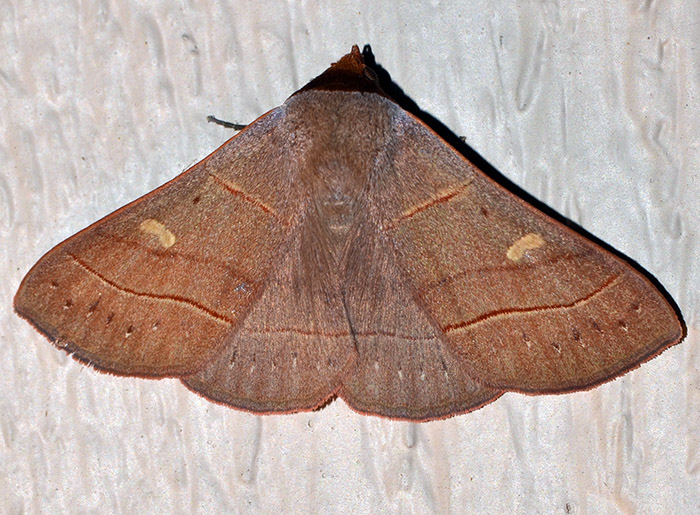 Panopoda rufimargo - Hodges#8587 (Red-lined Panopoda). | My second out of four Panopoda species that occur in America north of Mexico. Its green larvae eat leaves of beech, red oak, and white oak. This specimen sat rather stoically under our porch lamp while other moths were frantically flying around it. bug guide (this photo): https://bugguide.net/node/view/1505911 | ||
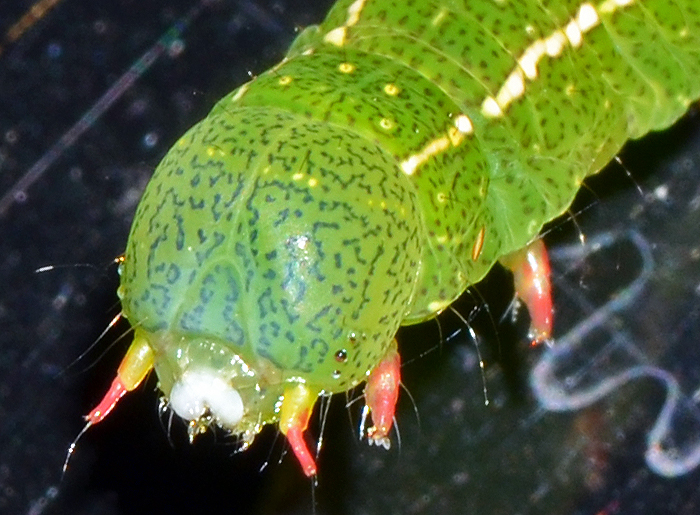 Panopoda sp. - imm. | The caterpillars of Panopoda are lime green with creme to yellow, subdorsal stripes and tiny, dark spots. The head is rounded and has red antennae. They also have red legs and can move rather quickly. Food plants include birch and oak.
bug guide (these photos): https://bugguide.net/node/view/1539368 D. L. Wagner, Caterpillars of Eastern North America (2010): https://tinyurl.com/DLWagnerPanopoda | ||
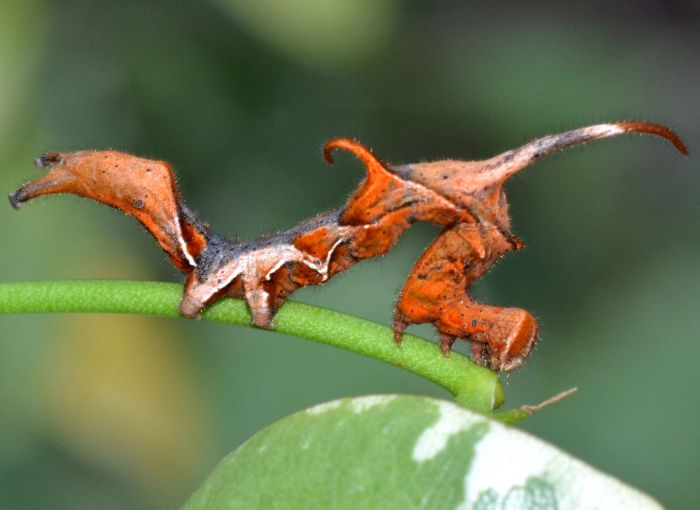 Phyprosopus callitrichoides - Hodges#8525 | The Curve-Lined Owlet (Phyprosopus callitrichoides) is a rather unremarkable, brown moth, but what an amazing and bizarre caterpillar. The larvae feed on greenbrier species (Smilax--a flowering, often woody vine). The undulating shape of the caterpillar seems to be characteristic and not a consequence of its movement. The small photo below shows a magnified view of the head.
bug guide (this photo): http://bugguide.net/node/view/562195 | ||
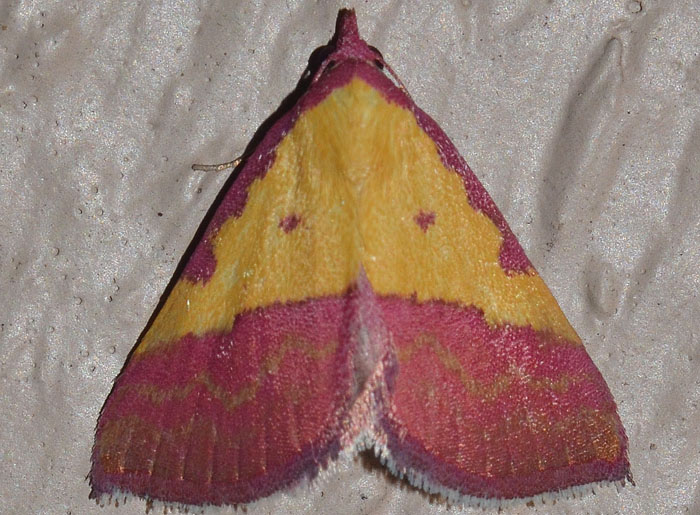 Phytometra rhodarialis - Hodges#8481 | Amazing colors! The forewings of this small moth are yellow and pink. The moth also has thin pink (essentially red) bands near its head. bug guide (this photo): http://bugguide.net/node/view/1100819 | ||
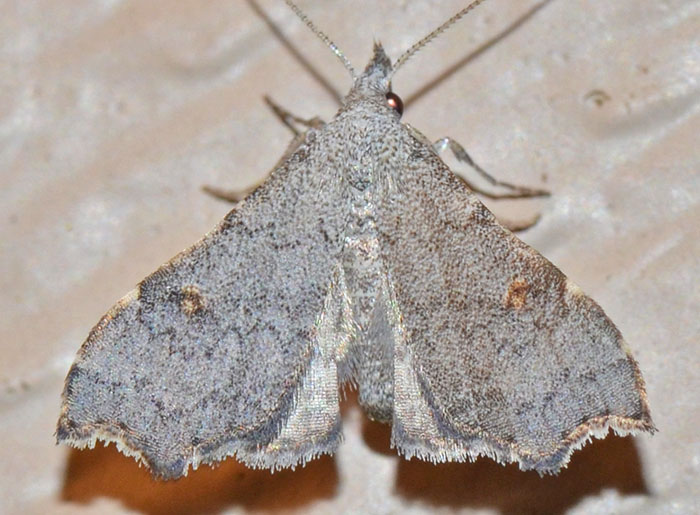 Redectis pygmaea - Hodges#8400 (Pygmy Redectis). | A little, grayish litter moth with a wingspan of close to 15 mm. The genus has two species in North America, so together with the sister species above, this completes the set for my backyard. bug guide (this photo): http://bugguide.net/node/view/1447238 | ||
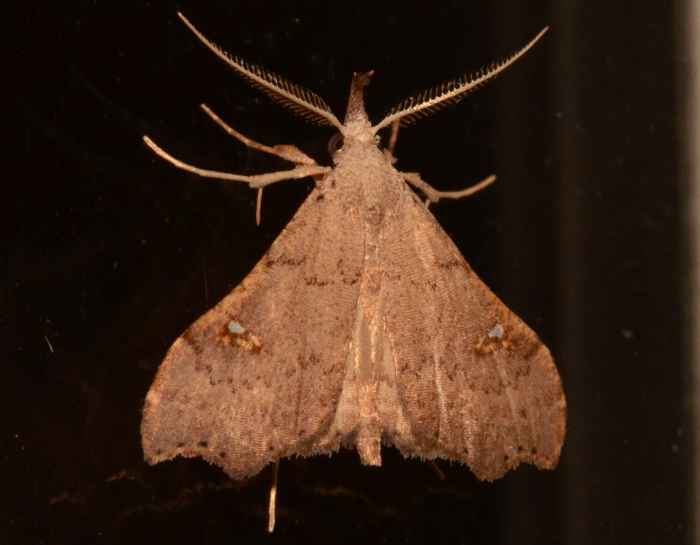 Redectis vitrea - Hodges#8401 (White-Spotted Redectis). | This brown little moth is likely a White-Spotted Redectis (Redectis vitrea). It can be found in the Eastern half of the country but is not very common. Its larvae have been reported to feed on crabgrass. bug guide (this photo): http://bugguide.net/node/view/583994 | ||
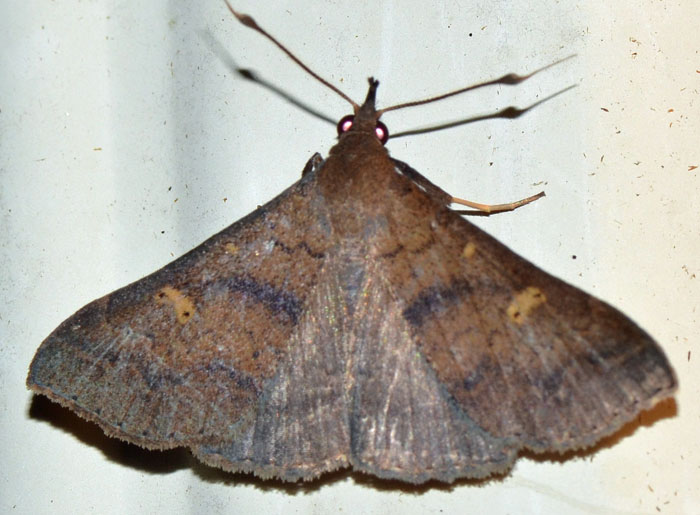 Renia discoloralis - Hodges#8381 | This fairly large moth is common in the Eastern half of the US. Its larvae feed on dead leaves. The caterpillars have a brownish red color with black spots. The genus has 13 species in North America. bug guide (this photo): http://bugguide.net/node/view/980592 | ||
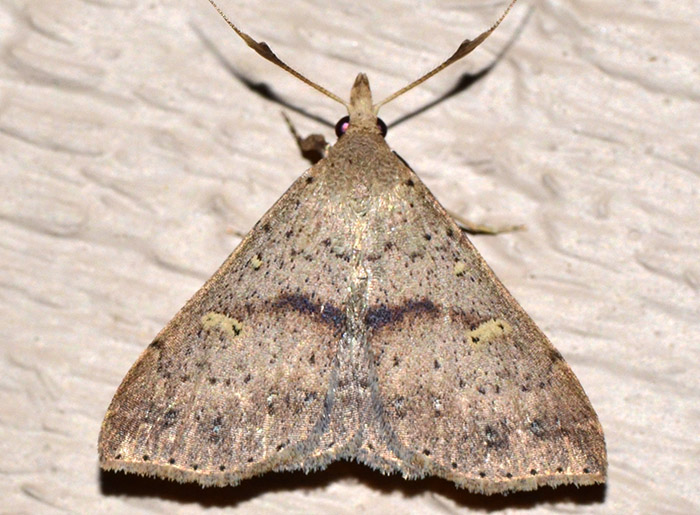 Renia adspergillus - Hodges#8386 (Speckled Renia Moth) ♂. | The wing span of this litter moth is about 1 inch. It is also known as "The Gray Renia". Larvae feed beneath a web of silk. bug guide (this photo): https://bugguide.net/node/view/1505632 wikipedia: https://en.wikipedia.org/wiki/Renia_adspergillus | ||
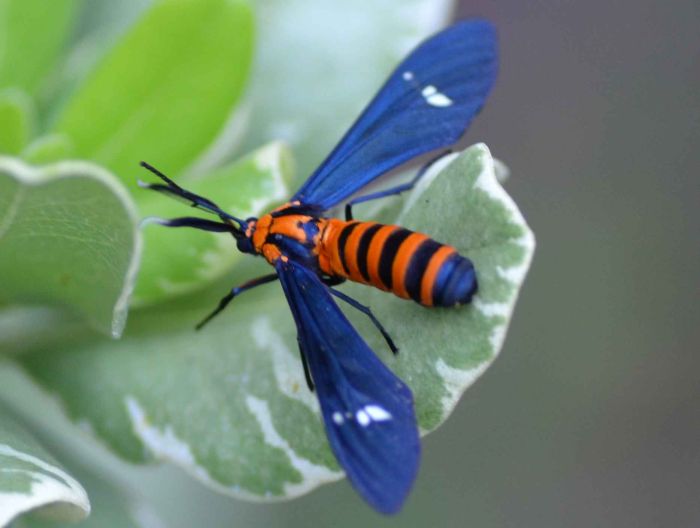 Syntomeida ipomoeae - Hodges#8282 | What an amazing moth! This is Syntomeida ipomoeae (Yellow-Banded Wasp Moth). The wing span is at least 4 cm and the orange color/black really striking. Apparently this moth is only found in Florida and Georgia. In my opinion, the name of its tribe--Tiger Moths--does it more justice than its common name.
bug guide (this photo): http://bugguide.net/node/view/559892 | ||
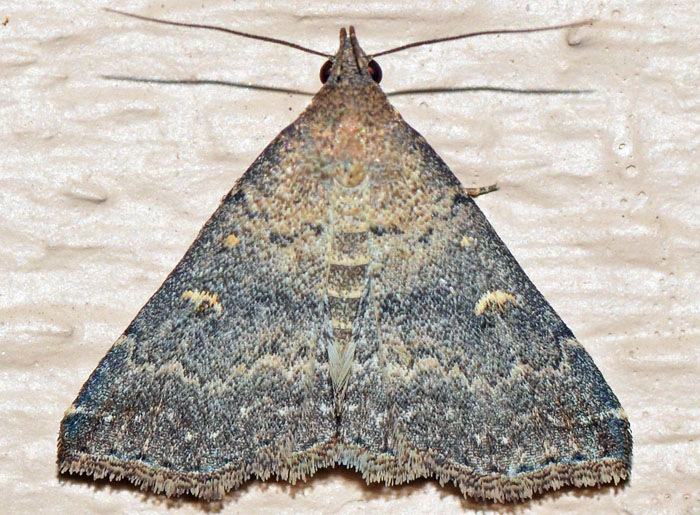 Tetanolita sp.. | This litter moth is probably Tetanolita floridana - Hodges#8368 that despite its name, is wide-spread in the eastern half of the US. Its larvae seem to feed on fallen organic matter. bug guide (this photo): http://bugguide.net/node/view/998164 | ||
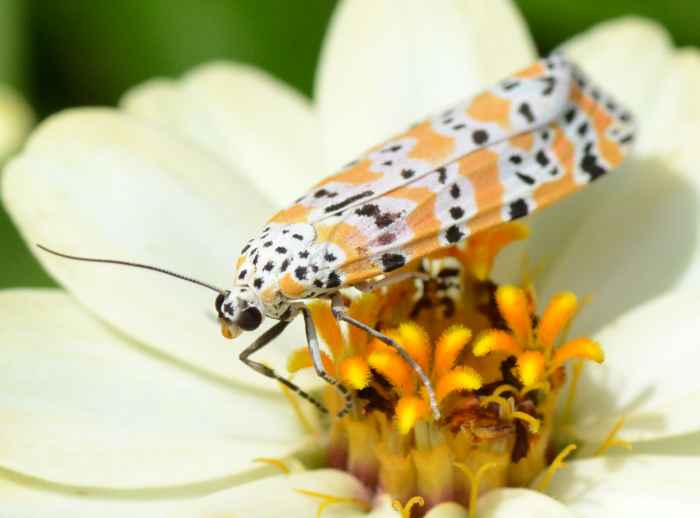 Utetheisa ornatrix - Hodges#8105 (Rattlebox Moth). | Rattlebox (or Bella) Moth (Utetheisa ornatrix). Until recently there were two subspecies recognized and this one would have belonged to U. ornatrix bella. All developmental stages are protected by an alkaloid which is also transferred during mating from the male to the eggs via its sperm.
 A short video is available on my YouTube channel. A short video is available on my YouTube channel.bug guide (this photo): http://bugguide.net/node/view/572546 | ||
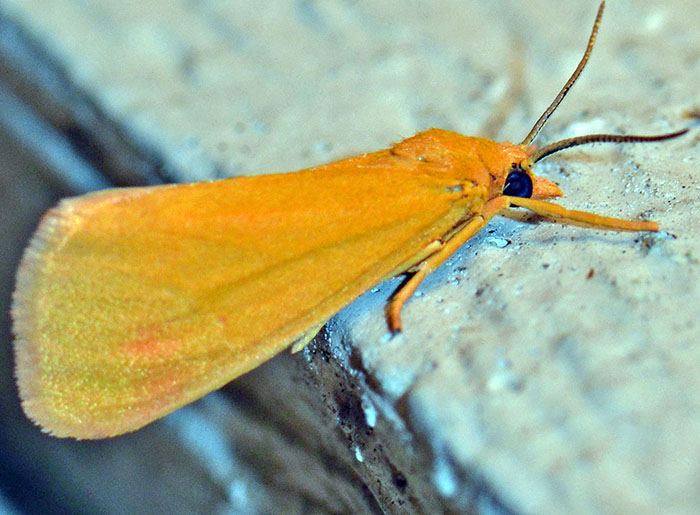 Virbia rubicundaria - Hodges#8122 (Ruddy Virbia). | Found in Florida, Georgia, and along the Gulf Coast to eastern Texas. Most parts of this moth are clay-colored with orange hues; only the hindwings are slightly darker (or more reddish) with brownish spots on females (not visible here). An older name for this species is Holomelina rubicundaria. bug guide (this photo): https://bugguide.net/node/view/1435751 | ||
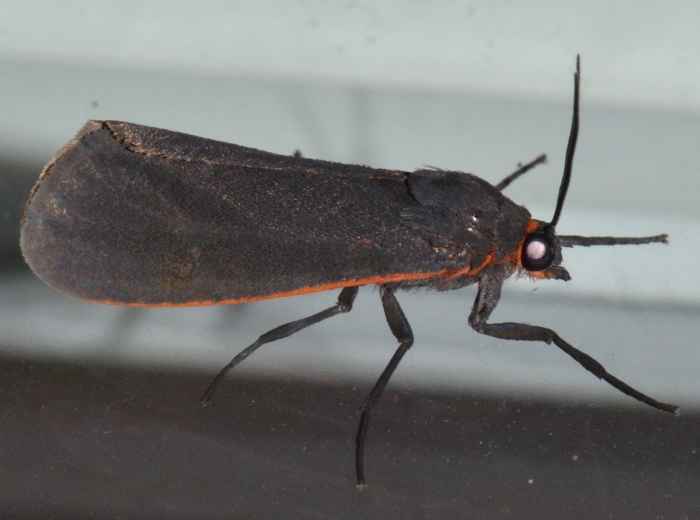 Virbia laeta - Hodges#8114 (Joyful Holomelina). | This tiger moth is a Joyful Holomelina (Virbia laeta). Couldn't find any information on this moth.
bug guide (these photos): http://bugguide.net/node/view/579149 | ||
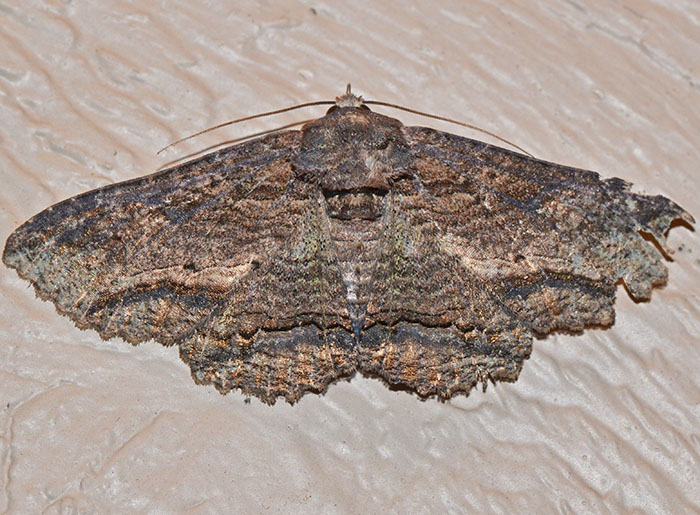 Zale lunata - Hodges#8689 (Lunate Zale). | A fairly large, very rugged looking moth. The wingspan varies between 40 and 55 mm. The brownish wings are quite variable in color details and patterns. The larvae feed on deciduous trees such as maples and willows. bug guide (this photo): http://bugguide.net/node/view/1447647 |

